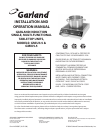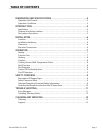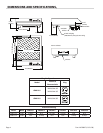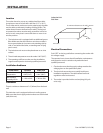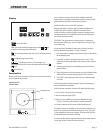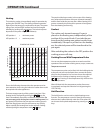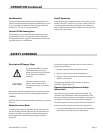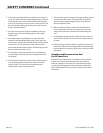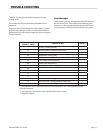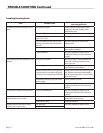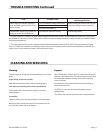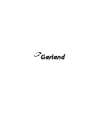
Part # 4020897 (01/31/08) Page 5
DIMENSIONS AND SPECIFICATIONS, Continued
Operation And Control
Lamp operation 24V DC/max. 40mA (red)
Key pad and LED display
Operation Conditions
Max. Tolerance Of The Nominal
Supply Voltage
+6/-10%
Supply Frequency 50/60 Hz
Protection Class 1P 43
Minimal Diameter Of The Pan 5” (127mm)
INTRODUCTION
Application
The following instructions contain information, which
is fundamentally important and must be taken into
account during assembly, operation and maintenance.
They must therefore read very carefully before installation
and operation by the responsible specialist sta and the
operator(s). They must always be available for consultation at
the place of operation.
Purpose of induction cookers
The Garland induction unit cookers are especially suitable
as cookers in the kitchen and for the preparation of meals
on the table. A cooker can be used for cooking, warming up,
keeping warm, ambéing, roasting, etc. The cookers are to
be used only with pans made of material which is suitable for
induction. There are specic manufacturers who sell special
types of pots and pans for induction cooking.
DO NOT use induction cookers to heat up any other
metallic objects other than pots and pans provided for it.
Description of products
We manufacture several basic types of induction cookers
with various performances and measurements. All are
built to last; they are also compact and powerful with a
revolutionary technology in a complete case of stainless
steel. All of our accessories are designed to coordinate with
the induction units and since each unit is equipped with
continuous control, they allow ecient cooking.
Features include:
• Simple operation by key pad
• Power display with LED
• Compact powerful electronics enable at construction
and safe operation
• A maximum of safety thanks to multiple safety functions
• Short cooking time
• Electronic checking
• Compact measurement – light weight
• Meets all current standards: VDE EN 60335-1/-2/36, CE-
conforming
• UL197; CAN/CSA/C22.2 No., 109, NSF 4-1996



